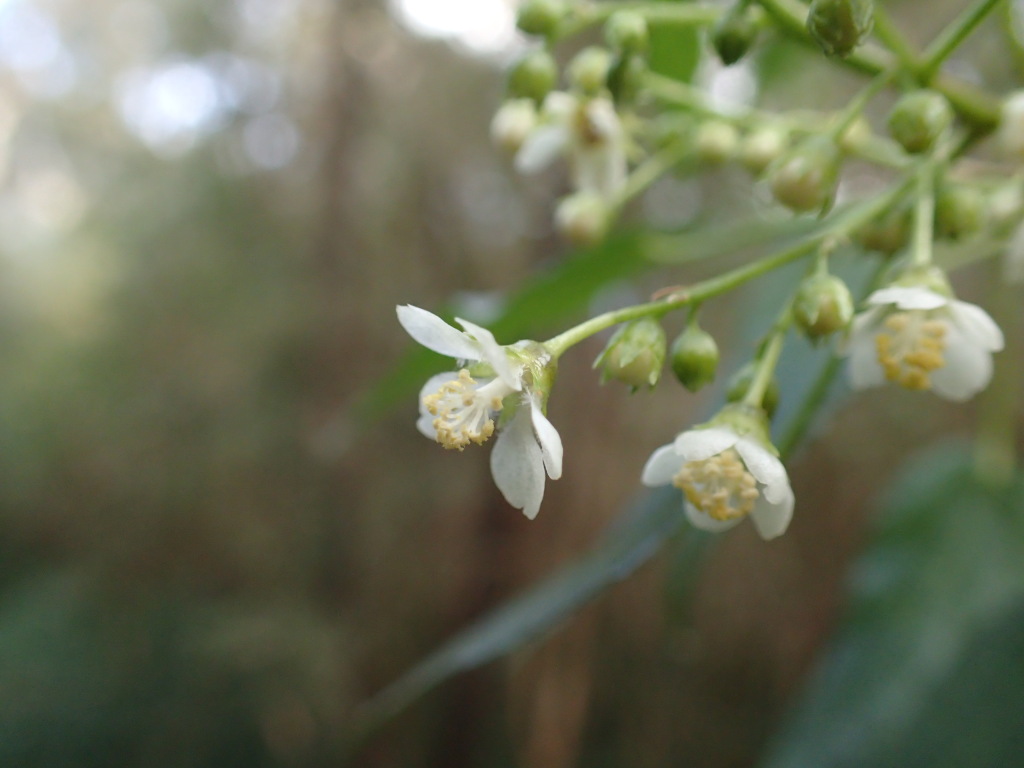Gynatrix pulchella
(Willd.) Alef. Hemp BushShrub or small tree to c. 5 m high. Leaves narrowly ovate to lanceolate, 4–10(–15) cm long, 1.5–3(–6) cm wide, margins crenate, surfaces both green, sometimes slightly paler below, glabrous to sparsely (rarely moderately) stellate-pubescent. Calyx c. 2–3 mm long, glabrous or with scattered stellate hairs; petals of male flowers obovate, 4–5 mm long; petals of female flowers oblong, not or barely exceeding calyx. Fruit 6–8 mm diam.; mericarps c. trigonous-ovoid, 4–5 mm long, densely stellate-pubescent; seed c. wide-reniform, 3 mm long, dark brown, smooth and glabrous. Flowers Aug.–Oct.
MuM, GleP, VVP, VRiv, GipP, OtP, WaP, CVU, NIS, EGL, EGU, WPro, HSF, HNF, OtR, Strz, VAlp. Also SA, NSW, Tas. Occasional in riparian forest, streamsides and shaded scrubs in southern and north-eastern Victoria, but apparently absent from the Grampians.
Plants from the far south-west, southern Otway and Strzelecki Ranges and Wilsons Promontory are commonly more pubescent than the near-glabrous forms typical through most of the species' range. These plants are probably referable to Plagianthus pulchellus var. tomentosus (type from Tasmania) but no appropriate combination exists for this taxon in Gynatrix. The degree of hairiness of leaves, calyces etc., is variable and appears to be at least partly under environmental control, suggesting that formal recognition of the variety may not be warranted.
The stems yield copious fine fibre which was used by Koories for string, bags etc.
Walsh, N.G. (1996). Gynatrix. In: Walsh, N.G.; Entwisle, T.J., Flora of Victoria Vol. 3, Dicotyledons Winteraceae to Myrtaceae, pp. 351–352. Inkata Press, Melbourne.
 Spinning
Spinning

